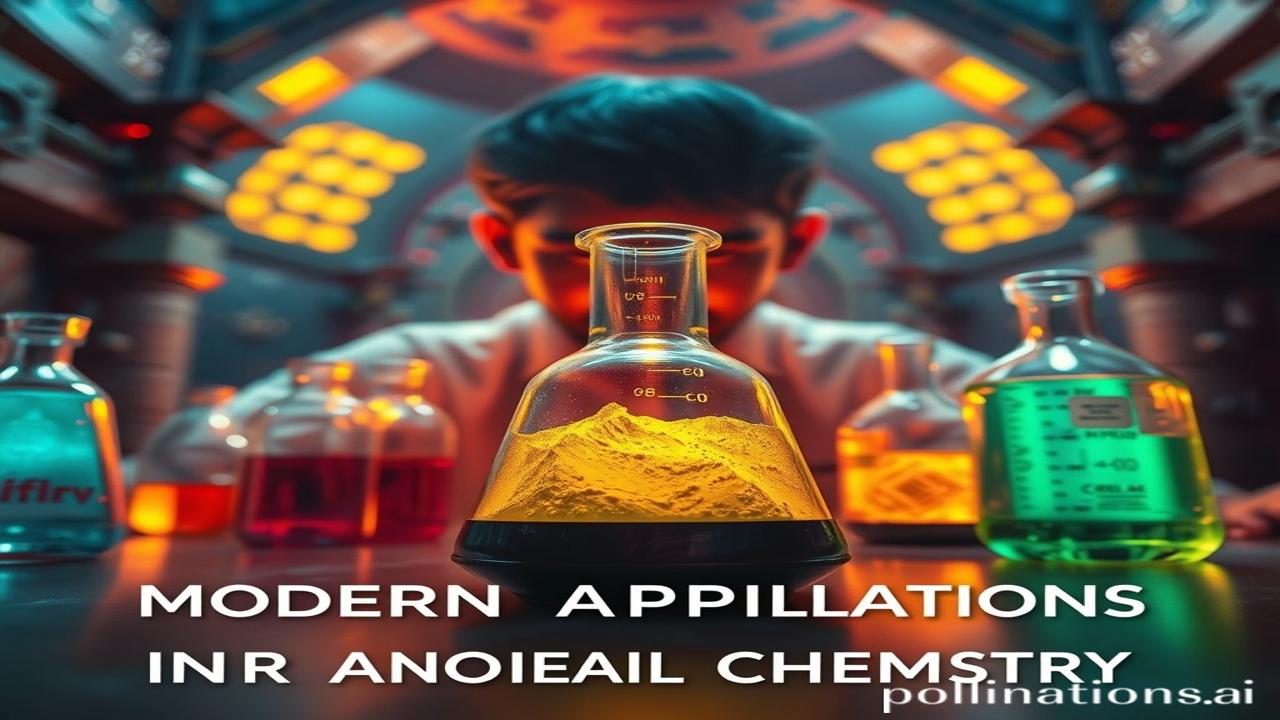Waqt Ki Ret Mein Dabi, Gyan Ki Khushboo: Unlocking Ancient Indian Chemistry in Modern Times
Kabhi socha hai, woh aag jo Yagna kund mein jalati thi, woh sirf ek ritual nahi thi? Usme chhipa tha rasayan shastra ka ek gehra gyaan. Woh rang jo Ma Durga ki murti pe chadhta hai, sirf rang nahi, science hai. Hamari dharti, Bharat, sirf spiritual nahi, scientific bhi hai. Chaliye, waqt ki ret mein daba woh khazana dhundte hain, aur dekhte hain ki ancient Indian chemistry aaj bhi kaise zinda hai.
Itihas Ki Galiyon Mein: Ancient Indian Chemistry Kya Thi?
Ancient Indian chemistry, jise Rasashastra bhi kaha jaata hai, sirf alchemy nahi thi. It was a complex understanding of matter, energy, and their interactions. Iski shuruwat Indus Valley Civilization se hui thi, around 3000 BCE. Phir, Vedic period mein, iska aur vikaas hua. Nagarjuna, Charaka, Sushruta jaise mahapurushon ne isko aage badhaya.
Why is it important? Kyunki is gyaan ne sirf medicinal practices ko nahi, balki metalworking, dyeing, aur cosmetic production ko bhi badal diya. Imagine, aaj hum jis ‘stainless steel’ ki baat karte hain, uski foundation ancient India mein hi rakh di gayi thi!
Zamini Sach: Raja Se Lekar Praja Tak – Chemistry Ka Aasar
Socho, ek din Raja Harshavardhana apni shahi प्रयोगशाला (laboratory) mein baithe hain. Woh apne vaidyas (doctors) ko herbs aur minerals ka mixture banaate hue dekh rahe hain. Unka maqsad hai, ek aisi dawa banana jo sabhi rog ko mita de. Maan lo, Maharani Lakshmi Bai apne sainikon ke liye talwaron ko aur bhi mazboot banane ke liye lohe ko special process se treat kar rahi hain.
“Maharani,” ek sainik kehta hai, “Yeh rasayan ka khel hamein aur bhi shaktishali bana dega!”
Aur woh sach keh raha tha. Ancient India mein chemistry sirf kitaabon mein nahi, balki life mein dhal chuki thi. Farmers apni kheti ke liye natural fertilizers use karte the. Artisans vibrant dyes banate the, aur warriors apni talwaron ko deadly banane ke liye alag-alag processes apnate the.
Dharohar Aur Pehchaan: Aaj Bhi Zinda Hai Woh Vigyaan
Aaj, agar hum Ayurveda ki baat karte hain, toh woh ancient Indian chemistry ka hi result hai. We see it in:
- Ayurvedic Medicine: Bhasmas (ash-based medicines) are a prime example of sophisticated chemical processes.
- Metal Crafting: The iron pillar of Delhi, which has stood for over 1600 years without rusting, is a testament to the mastery of ancient Indian metallurgy.
- Textiles: The vibrant colors and intricate patterns of Indian textiles are due to the use of natural dyes and mordants developed through ancient chemical knowledge.
- Cosmetics: Kajal, haldi (turmeric), and other natural cosmetics used in Indian households are rooted in ancient practices.
Yeh sab Bharatiyata ka ek important part hai. Yeh humein yaad dilata hai ki hum kitne intellectual aur innovative the. Today, as the world seeks sustainable solutions, the principles of ancient Indian chemistry are gaining renewed attention for their eco-friendly and holistic approach.
Mazedar Tathya Ya Bhram-Bhanjak: Myths and Realities
Log samajhte hain ki ancient chemistry sirf magic thi. Lekin asli sach yeh hai ki iske peeche observation, experimentation, aur documentation ki ek lambi process thi. Yeh koi tukka nahi tha, balki disciplined scientific approach tha. For example, Sushruta Samhita, an ancient Indian text on surgery, details the preparation of various surgical instruments and medicines with remarkable precision.
Drishya Aur Bhavnaen: Ek Anubhav
Imagine the smell of sandalwood and burning herbs filling the air in an ancient Ayurvedic clinic. Feel the smooth texture of a well-crafted bronze statue. Hear the rhythmic chanting of mantras as a chemist-priest prepares a potent medicinal potion. The experience is multi-sensory, a blend of science, spirituality, and art.
Antim Vichar Ya Uddharan:
“Aham Brahmasmi” – I am the universe. This ancient Indian saying reminds us that everything is interconnected, just like the elements in chemistry. The wisdom of our ancestors is a guiding light, showing us how to live in harmony with nature and harness its power for the betterment of humanity. And that, my friends, is the true legacy of ancient Indian chemistry.
